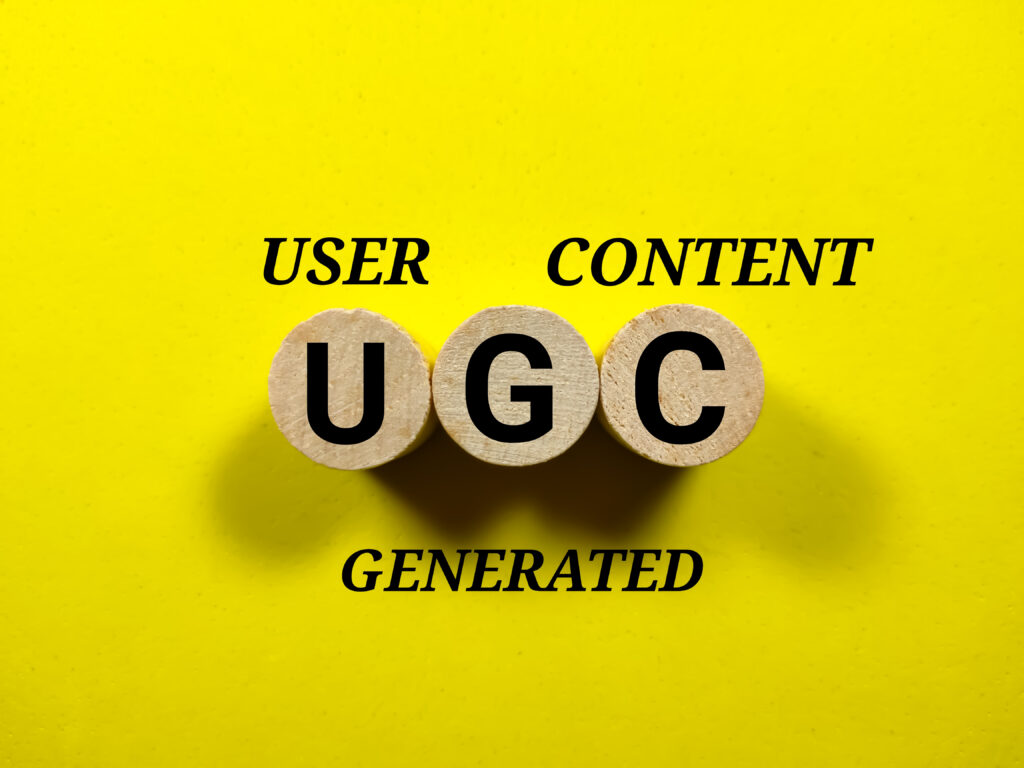
What is User-Generated Content (UGC)?
User-Generated Content (UGC), also referred to as consumer-generated content, is any original content created by customers or social media users that is brand-specific and shared on various channels such as social media platforms, blogs, or other digital spaces. UGC serves as an authentic expression of customers’ experiences and opinions about a product or service.
This form of content comes in diverse formats, including images, videos, product reviews, testimonials, blog posts, or even podcasts. It’s a powerful tool for brands to build credibility and foster a sense of community among their audience.
For instance, a satisfied customer might share a picture using a product and tag the brand on Instagram, showcasing their positive experience. Brands often reshare such UGC to further amplify their reach and authenticity.
Types of User-Generated Content (UGC)
User-Generated Content (UGC) is an integral part of many marketing strategies, offering various styles and formats to suit different branding needs. Broadly, UGC can be categorized into two types: organic UGC and paid UGC. Both play distinct yet crucial roles in shaping a brand’s identity.
Organic UGC
Organic UGC refers to content voluntarily shared by real-life customers without any incentives or compensation from the brand. This is the most genuine and trustworthy form of UGC, reflecting customers’ honest opinions and experiences.
- Reviews and Testimonials: Online reviews and testimonials are critical for establishing trust. Positive reviews act as social proof and can be featured on your website, social media pages, or in marketing campaigns. Many brands transform glowing testimonials into visually appealing graphics to increase their impact.
- Photos: Photos are perhaps the most common form of UGC. Customers often share images showcasing how they use a product, making it relatable for potential buyers. Implementing hashtags specific to your brand can help in collecting and identifying such content easily.
- Videos: Videos, especially those on platforms like YouTube, TikTok, and Instagram, are incredibly influential. For instance, YouTubers may post “unboxing” or “product haul” videos that highlight several brands. Brands can reshare these clips to provide an authentic perspective on their offerings.
- Social Media Posts: A simple positive mention on platforms like X (formerly Twitter) or Instagram can become a valuable piece of UGC. Reposting such mentions reinforces the authenticity of the content and helps build a connection with the audience.
- Blog Posts: Bloggers often include product mentions or reviews in their posts. Whether it’s a detailed review or a casual mention, such blog posts can be repurposed on your website or social media to add credibility to your brand.
Paid UGC
Paid UGC involves content created by professional UGC creators who are compensated for their work. This approach is particularly useful for new brands or those with limited organic UGC. Paid UGC retains the authenticity of customer-generated content but allows brands to direct the messaging.
Platforms like Fiverr or Upwork can connect you with talented UGC creators. Alternatively, loyal customers with a knack for content creation can also be approached to create paid UGC. The resulting content can then be shared across your marketing channels to boost visibility and engagement.
Why User-Generated Content (UGC) is Important
User-Generated Content (UGC) is a transformative asset for modern businesses, influencing engagement, trust, and conversion rates across various stages of the buyer’s journey. Below are key reasons why UGC is indispensable:
Authenticity
In an age where audiences are increasingly selective about the brands they support, authenticity is paramount. UGC embodies the real voices of customers, making it more trustworthy than traditional advertising. Research shows that 86% of consumers trust a brand that shares UGC, compared to only 12% who trust influencer promotions. Authentic UGC fosters a genuine connection, bridging the gap between brands and their audience.
Brand Loyalty
UGC empowers customers to become an active part of a brand’s community. By encouraging and sharing UGC, brands create a sense of belonging, deepening customer loyalty. Interactive campaigns or shout-outs to customers who contribute UGC can nurture long-term relationships and foster a thriving brand community.
Social Proof
UGC acts as modern-day word-of-mouth advertising. Seeing real customers enjoying a product encourages others to try it, leveraging the psychological phenomenon of social proof. By showcasing satisfied customers’ experiences, UGC builds trust and drives conversions.
Content Curation
UGC extends beyond social media. It can be utilized on websites, in emails, and across digital marketing campaigns. For instance, incorporating UGC in cart abandonment emails or landing pages can significantly enhance conversion rates. Brands like Calvin Klein effectively curate UGC to create engaging landing pages that showcase authentic customer stories.
Cost-Effectiveness
Traditional advertising can be expensive, but UGC provides a budget-friendly alternative. Brands can scale their content efforts by repurposing authentic customer posts, eliminating the need for costly ad agencies or campaigns. For startups and smaller businesses, UGC is a practical and impactful way to enhance brand visibility.
Best Practices for User-Generated Content (UGC)
To maximize the benefits of User-Generated Content (UGC), brands should follow these best practices:
- Request Permission: Always seek consent before reposting customer content. This not only builds goodwill but also ensures compliance with copyright laws.
- Credit Creators: Acknowledge the original creators by tagging them in your posts. Proper credit strengthens relationships and encourages more users to create content for your brand.
- Define Your Needs: Clearly communicate the type of UGC you’re looking for. Whether it’s product photos, reviews, or testimonials, setting expectations makes it easier for customers to contribute.
- Align with Goals: Integrate UGC into your broader marketing objectives. Whether you aim to increase awareness or boost conversions, ensure that your UGC strategy aligns with these goals.
Examples of Successful User-Generated Content (UGC)

GoPro
GoPro effectively uses UGC to fuel its YouTube channel, where customer-created videos have amassed millions of views. The brand further encourages creativity through daily photo challenges and awards programs, fostering a strong community.
Lululemon
Lululemon leverages the hashtag #thesweatlife to encourage UGC. By sharing content from loyal customers and ambassadors, they expand their reach and showcase the versatility of their products.
LaCroix
LaCroix’s hashtag #LiveLaCroix collects relatable UGC from a wide range of users. By featuring everyday customers instead of influencers, the brand creates an approachable and authentic image.
Well Traveled
Well Traveled, a travel brand, highlights member-generated content to showcase exclusive perks and build community trust. Their strategy emphasizes the value of authentic customer stories.
Edloe Finch
Edloe Finch invites customers to submit photos of their furniture, displaying these on product pages. This approach provides social proof, helping potential buyers visualize the products in real-life settings.
Final Thoughts
User-Generated Content (UGC) is a cornerstone of effective marketing strategies. It combines authenticity, community building, and cost-efficiency to drive engagement and conversions. By implementing a well-thought-out UGC strategy, brands can unlock the full potential of their audience’s creativity and trust. Start incorporating UGC into your marketing efforts today to elevate your brand to new heights.



